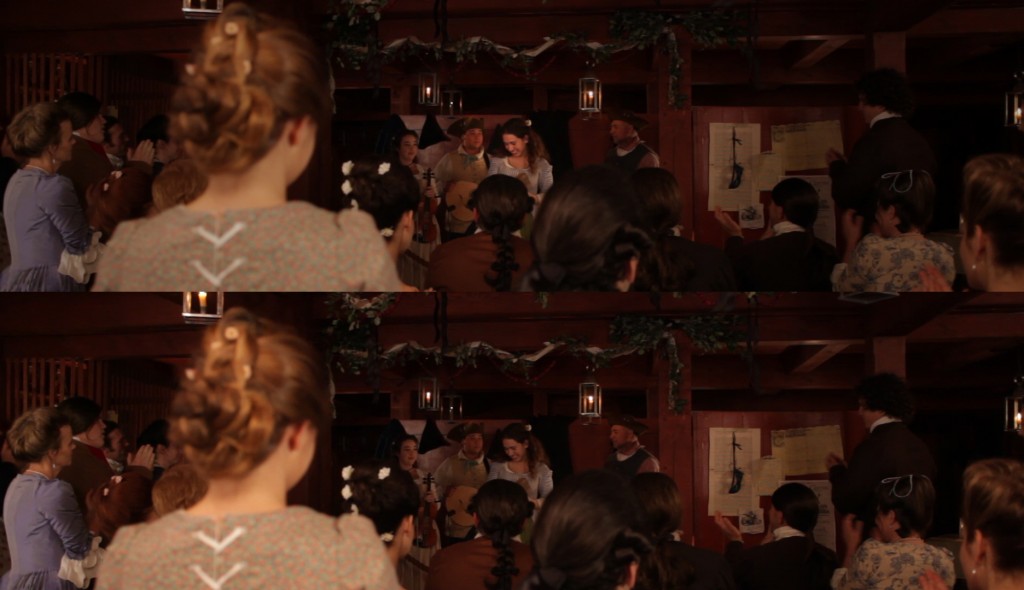The Color of Courage, New Hampshire
Color Adjusting and the Period Film Experience
Keep in mind, I know just enough about this topic to be dangerous, and if you have ever argued, as a family, about the proper color adjustment of the television set, you have an idea how volatile this issue can be, but the bottom line is that almost everything you see on television and in theaters these days has been “color adjusted,” “colorized,” “color balanced,” or “color massaged” in some way.
One way of understanding this reality is to consider the last time you saw one of those “on the set” interviews. The ET-style correspondent is talking to an actor on the sound stage, and you actually see all the costumes, the art direction, the props here and there, but the feel of the shot is nothing like what you see in either the theater or on the TV. Of course, the news show is using a different recording format, and the lighting is going to be greatly more considered for the theatrical shot, but there’s also the matter of the adjusted color itself.
As one Lynda.com tutorial instructor put it, (Chad Perkins?), the audience expects a color adjusted experience. They don’t want to see the story in a hyper-accurate light. They want to feel a story about despair in gray tones. They want to experience bliss with the chroma getting a tad exaggerated. In period pieces, they want rooms to feel a little dark and the image to have a little bit of the painted, posterized feel. (A very little bit. Go too far and they become conscious of the effect.)
To make it even more complicated, apparently we all see color in different ways. (That would explain color blindness, wouldn’t it?). The cells in our retinas actually process color in different intensities, person to person. This also explains the living room fights over color balance.
Well, yesterday, our director of photography, Drew Ganyer, went through the entire timeline for episode three and applied video color effects in order to make shots balance with each other in the same scene and to turn the light down here and there, and in some cases use digital lighting effects to emphasize the characters who are primary to the scene.
The number of variables that affect this process are absolutely mind-boggling. In addition to the various conditions that might have existed when doing an exterior shot (changes in the angle of the sun, shifting fog, moving clouds, camera gain, f-stop, etc.), After Effects, Premiere, and Final Cut offer a dizzy array of color adjustment tools: levels, curves, three way color correctors. It’s something like being on the bridge of a jumbo jet, except that it’s actually a little more dangerous. People slap you if you bring up the golds too high. My own children sneer at me if I reach for a “lighting effects” tool.
Well, I feel a tad vindicated. The mighty Drew used a lighting effect here and there. Can you tell where?


